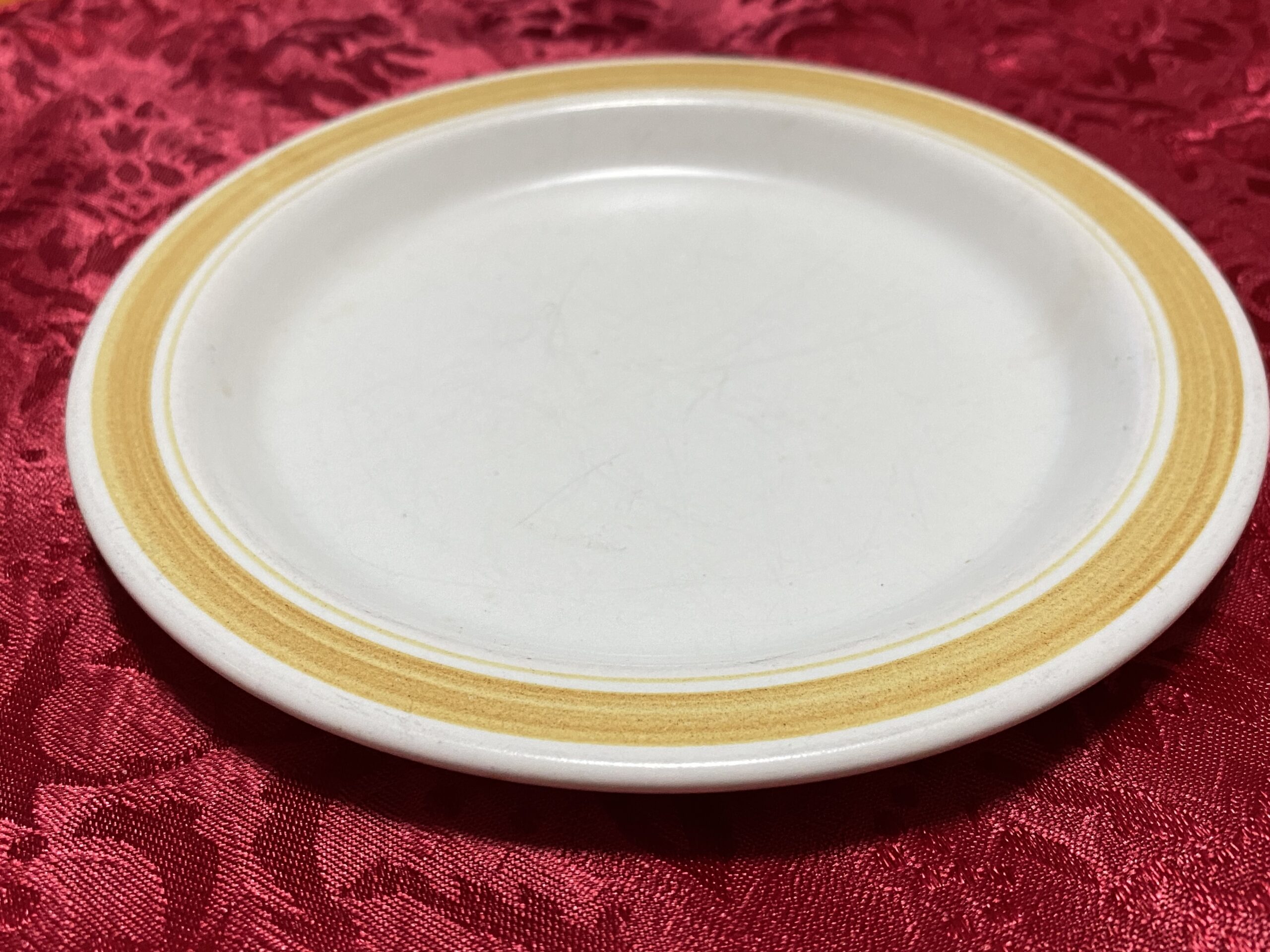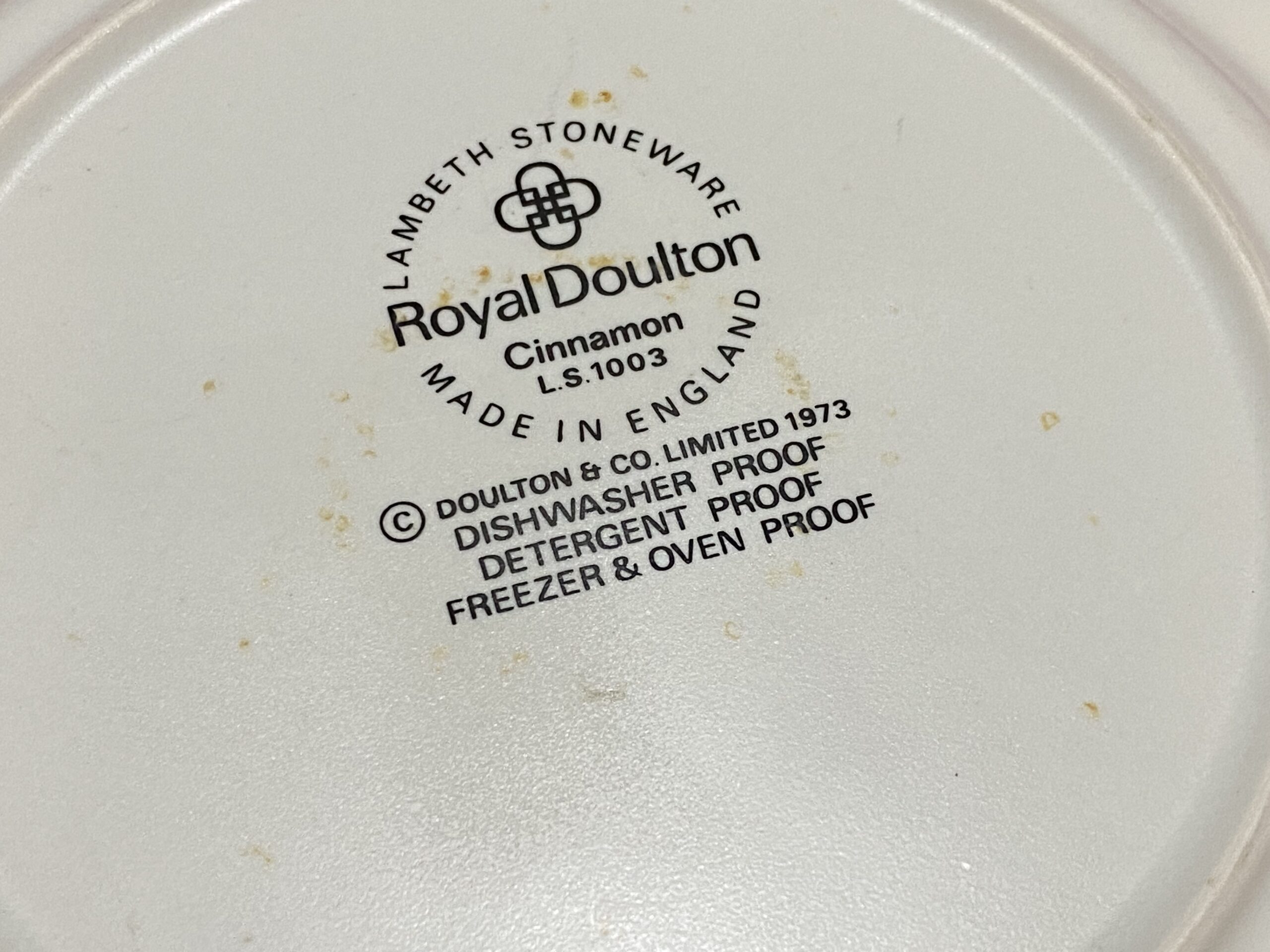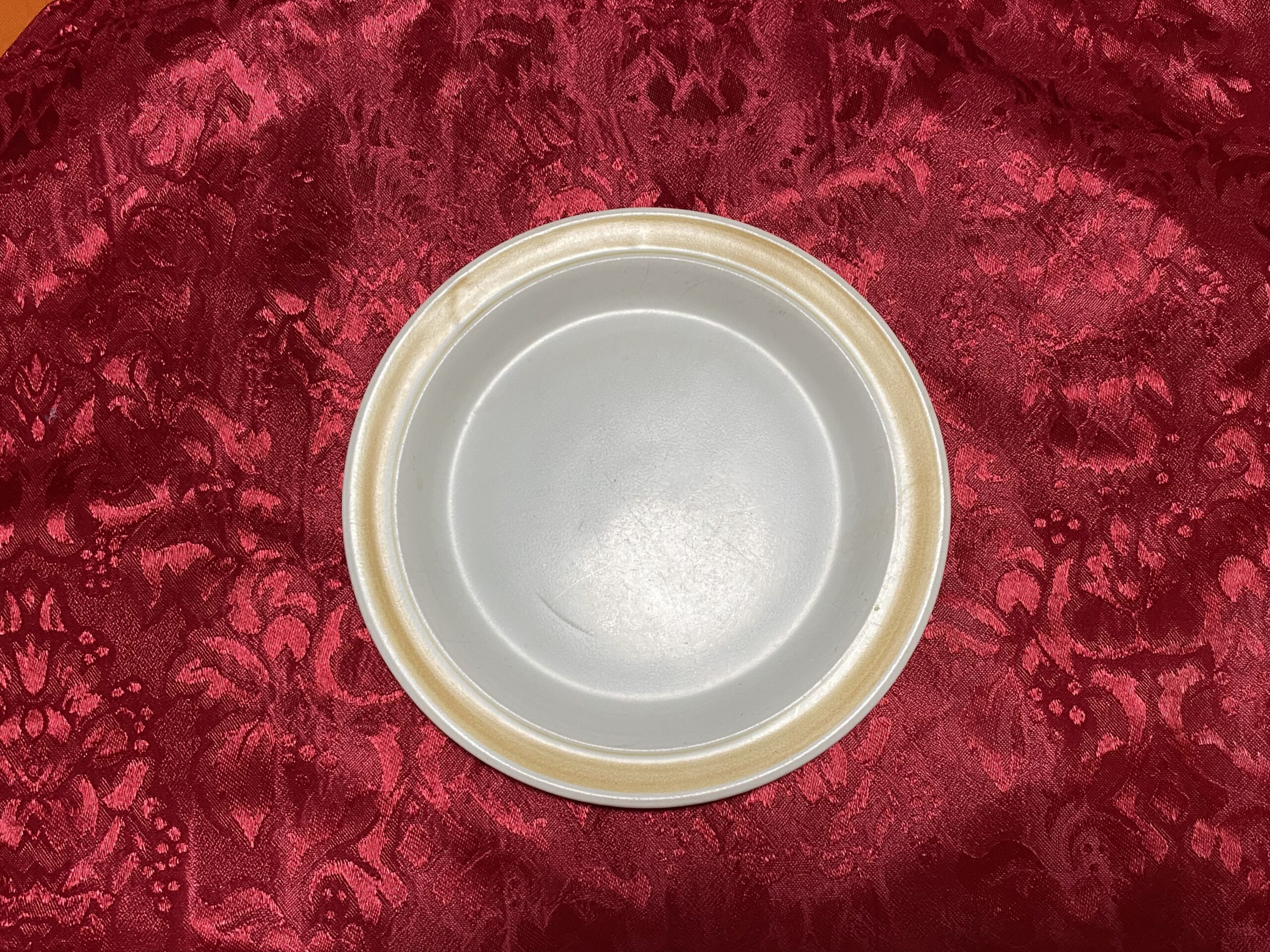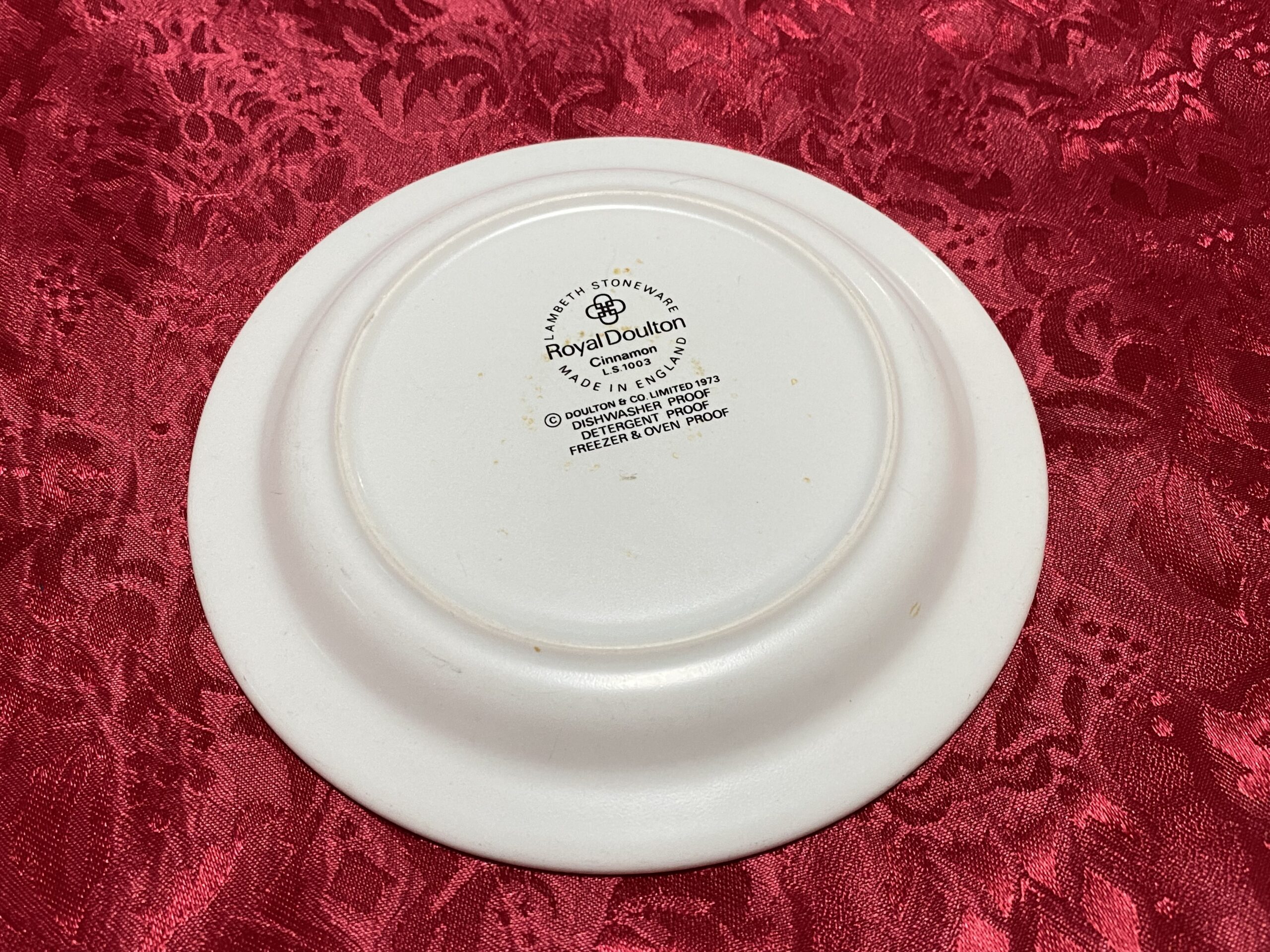Royal Doulton Cinnamon Pattern Lambeth Stoneware – Made in England: 65,500 ppm Lead (90 ppm & up is considered unsafe in modern children’s items.)

 Introduction:
Introduction:
Tamara Rubin is a Federal award winning independent advocate for consumer goods safety and childhood Lead poisoning prevention. She is also a mother of Lead-poisoned children. She began testing consumer goods for toxicants in 2009, and was the parent-advocate responsible for finding Lead in the popular fidget spinner toys in 2017. She uses XRF testing (a scientific method used by the Consumer Product Safety Commission) to test consumer goods for metallic toxicants (including Lead, Cadmium, Mercury and Arsenic). To read more about the testing methodology employed for the test results reported on this blog, please click this link.
Below you will find the full XRF readings for metals found for the item pictured. All readings are done multiple times to confirm the results for each component before sharing one full set of the readings for the item in the post. Results are replicable, science-based and accurate.
For some additional background about this work, please read the following links:
- A post discussing the testing methodology used here on this website.
- A menu with buttons for many of the different categories of information that can be found here on LeadSafeMama.com.
- A link to my documentary feature film on childhood Lead poisoning.
- The short video that shows you how to search this site.
- Items you can test at home with a LeadCheck swab.
- Items you really cannot test at home (items better tested with XRF technology)
- A post discussing some of the context for the concern of Lead in ceramics / dishware / pottery
- A post discussing why you cannot (in most cases) test dishware yourself at home.
Reading #1) Center of food surface of Royal Doulton dish
60-second reading
- Lead (Pb): 65,500 +/- 700 ppm
- Cadmium (Cd): non-detect
- Mercury (Hg): non-detect
- Bromine (Br): non-detect
- Chromium (Cr): non-detect
- Iron (Fe): 1,100 +/- 63 ppm
- Copper (Cu): 220 +/- 18 ppm
- Titanium (Ti): 8,910 +/- 534 ppm
- Zirconium (Zr): 20,000 +/- 300 ppm
- Barium (Ba): 346 +/- 28 ppm
- W: 205 +/- 41 ppm
- no other metals detected in consumer goods mode
Reading #2) Yellow edge of Royal Doulton dish
30-second reading
- Lead (Pb): 62,900 +/- 900 ppm
- Cadmium (Cd): non-detect
- Mercury (Hg): non-detect
- Bromine (Br): non-detect
- Chromium (Cr): non-detect
- Iron (Fe): 8,085 +/- 205 ppm
- Copper (Cu): 243 +/- 25 ppm
- Titanium (Ti): 54,200 +/- 1,300 ppm
- Zirconium (Zr): 20,900 +/- 400 ppm
- Tin (Sn): 403 +/- 16 ppm
- Barium (Ba): 298 +/- 38 ppm
- W: 355 +/- 57 ppm
- no other metals detected in consumer goods mode
Reading #3) back mark of Royal Doulton dish
30-seconds reading
- Lead (Pb): 49,200 +/- 700 ppm
- Cadmium (Cd): non-detect
- Mercury (Hg): non-detect
- Bromine (Br): non-detect
- Chromium (Cr): 12,500 +/- 400 ppm
- Manganese (Mn): 550 +- 134 ppm
- Iron (Fe): 4,503 +/- 140 ppm
- Cobalt (Co): 2,222 +/- 84 ppm
- Nickel (Ni): 971 +/- 57 ppm
- Copper (Cu): 234 +/- 23 ppm
- Titanium (Ti): 8,193 +/- 644 ppm
- Zirconium (Zr): 13,600 +/- 300 ppm
- Barium (Ba): 187 +/- 31 ppm
- no other metals detected in consumer goods mode
Some additional reading that may be of interest:
- Here are some additional Royal Doulton pieces I have tested.
- Here’s my overview post with other types of china I have tested.
- Here’s the “Made In England” category on the site.
As always, please let me know if you have any questions. Thank you for reading and thank you for sharing my posts.
Tamara Rubin
#LeadSafeMama

Never Miss an Important Article Again!
Join our Email List



 Introduction:
Introduction: 

This amount of lead in our dishes should be recalled and a new lead free issued what kind of company WOULD SLOWLY KILL MY CHILREN
I received the 8 piece dinner set of Royal Doulton, Cinnamon as a shower gift 48 years ago. Probable used a few plates 2 times. Always felt guilty not to follow my mother’s advice and use it more often. Thought about getting a cup and saucer out to enjoy a cup of coffee, but never did.